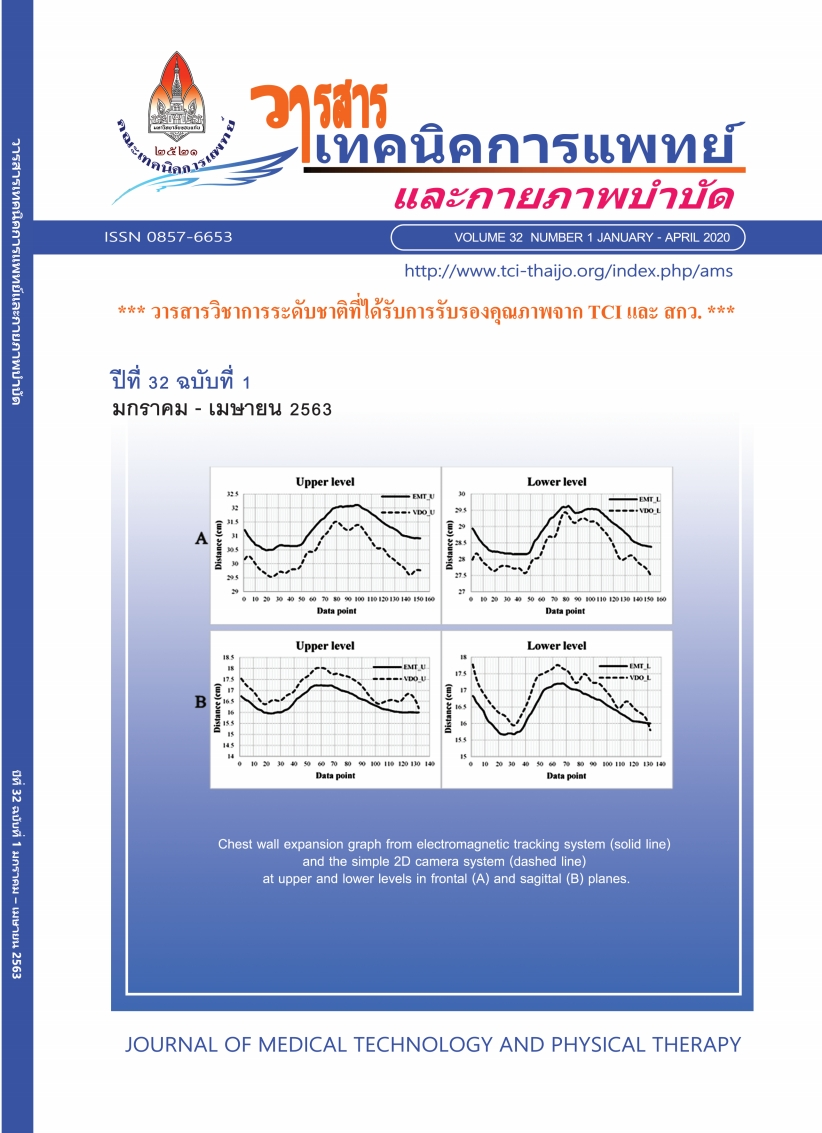An immediate effects of an intervention program “segmental trunk control intervention with the pelvic and lower limbs exercises” in children with inadequate trunk control
Main Article Content
Abstract
Background: Segmental trunk control intervention with the pelvic and lower limbs exercises is the effectiveness of physical therapy options for whom inadequate trunk control. Especially in children who has delayed development such as cerebral palsy (CP), Down syndrome and Autism. Objective: The aim of this study was to research the effect of an intervention program “segmental trunk control intervention with the pelvic and lower limbs exercises” on segmental trunk control and functional balance skills with inadequate trunk control Method: 21 children aged 5-14 years (15 boys, 6 girls) were received the same tested and intervention program. The Segmental Assessment of trunk control (SATCo) was used to evaluate trunk control. The Pediatric Balance Scale (PBS) was used to evaluate functional balance skills. Results: The result showed that both the SATCo and the PBS scores were statistically significant improvement after received intervention program. The SATCo showed statistically significant improvement of the total SATCo score, active control and reactive control scores after a single intervention (p< 0.05). In the PBS showed statistically significant improvement of the total PBS Score, sitting to standing, standing to sitting, standing with one foot in front (p < 0.05). Conclusion: An immediate effects of an intervention program “segmental trunk control intervention with the pelvic and lower limbs exercises” had a beneficial effect on trunk control and functional balance skills in children with inadequate trunk control.


